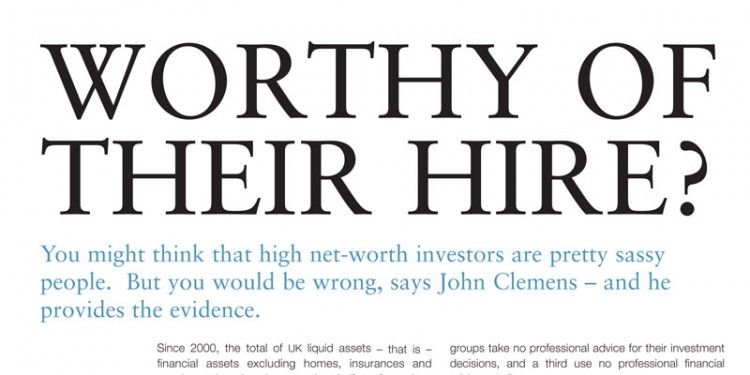You might think that high net-worth investors are pretty sassy people. But you would be wrong, says John Clemens – and he provides the evidence.
Since 2000, the total of UK liquid assets – that is – financial assets excluding homes, insurances and pensions – has risen by more than half: up from close to £1,100 billion to – on our estimates – rather more than £1,600 billion at the end of 2004. That’s an annual growth of nearly 11% and, of course, it’s the wealthiest households that benefit most. In 2000, the richest 1% of UK homes owned £650 billion of UK liquid assets, 64% of the total; now they account for just over £1 trillion, or 66% – that’s an average of £21/2m of liquid assets for each high net-worth (HNW) or ultra-HNW household.
This is the core wealth market for banks, asset managers and all top-drawer financial advisers to the wealthy. It divides into two main asset groups, the HNWs and the ultra-HNWs, with average liquid assets of £665,000 and £6.9m respectively.1 Yet recent Tulip studies2 have revealed that half the members of both groups take no professional advice for their investment decisions, and a third use no professional financial adviser at all.
Cautious approach?
Despite this, both the HNWs and the ultra-HNWs describe their approach to investment as highly cautious, with only a small minority saying they are willing to take risks to obtain above-average returns. Yet there is clear evidence from our research that those wealthy investors using advisers have their assets allocated far more cautiously than those making all their own investment decisions – the so-called DIY investors.
To read the full article, please download the PDF above.

